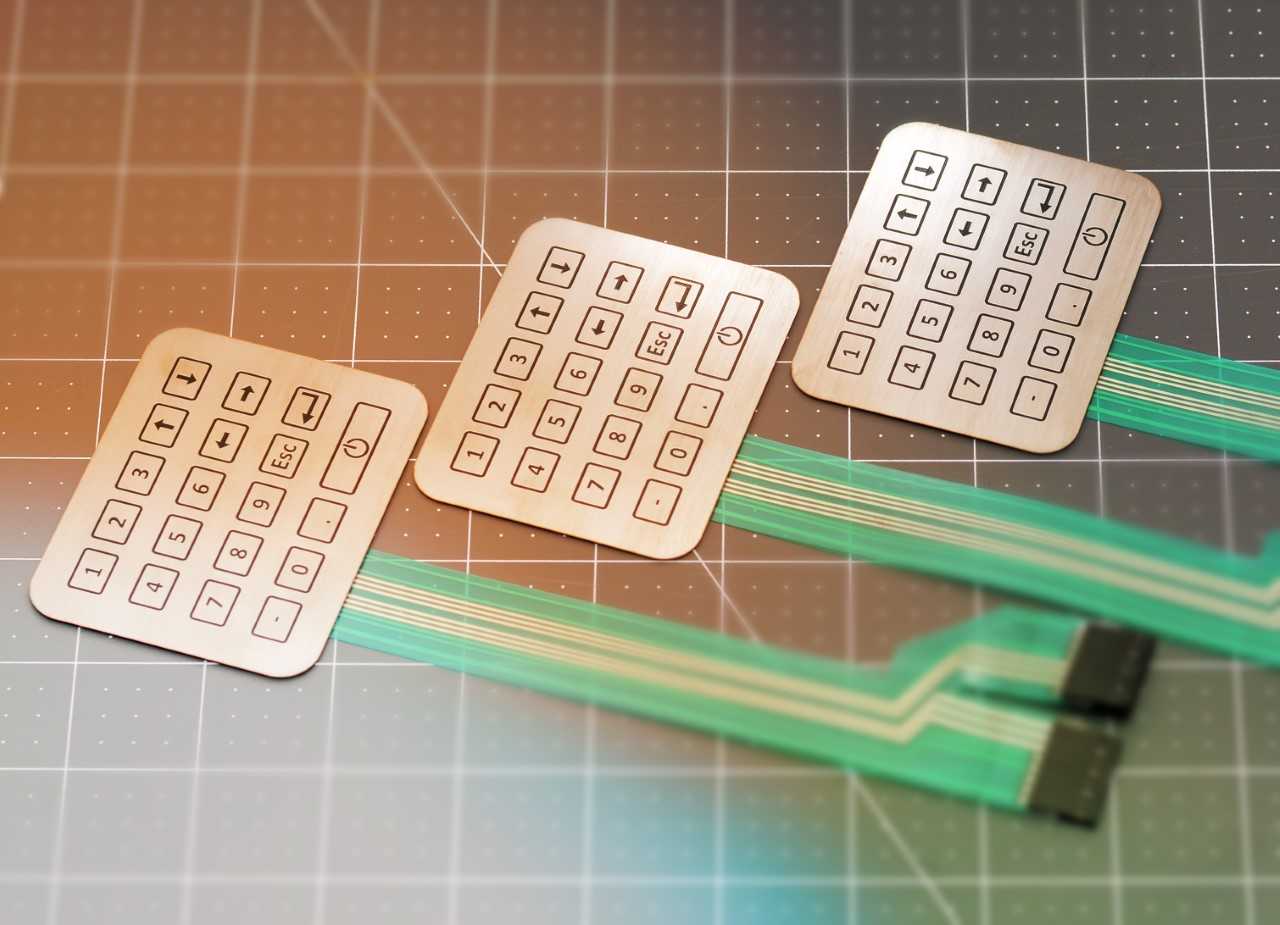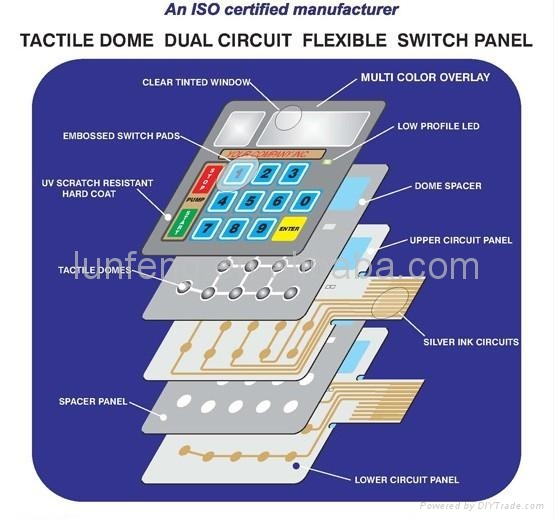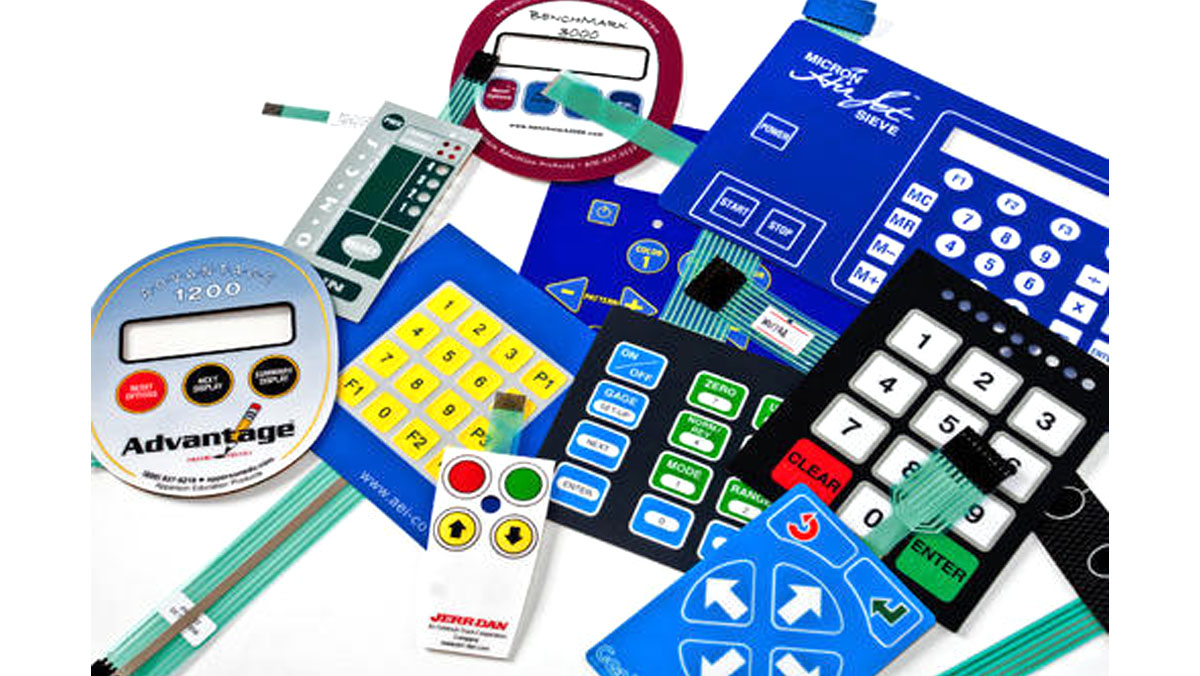Innovative Membrane Switch Solutions for Customized Control Panels
Innovative Membrane Switch Solutions for Customized Control Panels
Blog Article
Comprehending Membrane Switches Over: The Key to Reliable and long lasting Controls

What Are Membrane Layer Switches?
Membrane layer switches are a sophisticated service in the world of user interface innovation, incorporating functionality and style effortlessly. These tools serve as an interface in between customers and electronic systems, incorporating several components into a compact layout. Usually constructed from adaptable, slim layers of products, membrane switches are created to respond to touch, enabling customers to interact with equipment and electronic tools successfully.
The key components of a membrane switch consist of a printed circuit layer, graphic overlay, and a spacer layer that avoids unintended activation. The graphic overlay can be customized to reflect brand name identity or individual choices, boosting aesthetics while ensuring functionality. Membrane layer buttons are frequently made use of in numerous applications, consisting of clinical devices, customer electronic devices, and commercial devices, owing to their longevity and resistance to environmental elements such as moisture and dirt.
One of the essential advantages of membrane switches is their ability to withstand damage, making them ideal for high-traffic atmospheres. Additionally, they are light-weight and need minimal space, allowing for innovative designs in item growth. On the whole, membrane switches represent a effective and sensible option for modern-day electronic interfaces, weding modern technology with user-centric layout concepts.
Just How Membrane Layer Switches Over Work
The operation of membrane switches hinges on a basic yet reliable device that converts user input into digital signals. When a customer presses the button, the leading layer deforms, enabling a conductive aspect in the circuit layer to make contact with a matching conductive pad on the underside of the graphic overlay.
The layout of membrane layer switches can vary, however they frequently integrate domes or tactile components to provide comments to the customer, improving the total experience - membrane switch. The materials utilized in membrane buttons, such as polyester or polycarbonate, add to their sturdiness and resistance to ecological variables, including moisture and dust. The printed circuits are normally encapsulated, which safeguards them from wear and tear over time.
Advantages of Membrane Layer Switches

Furthermore, membrane switches are known for their sturdiness. Built from robust materials, they are resistant to dirt, dampness, and physical wear, which dramatically extends their life expectancy compared to traditional mechanical switches. This longevity makes them specifically ideal for high-traffic settings and applications calling for long life.
An additional significant advantage is the simplicity of cleansing and maintenance. The smooth surface of membrane changes lessens dirt buildup and is usually unsusceptible spills, making them perfect for settings that require frequent sanitization.
Additionally, membrane switches use a streamlined account, bring about a thinner layout that can be incorporated into numerous gadgets without adding bulk. This function not just boosts the visual charm yet also adds to a more ergonomic product design.
Applications of Membrane Layer Buttons
Functional and straightforward, membrane buttons find applications across a variety of sectors, consisting of medical gadgets, consumer electronic devices, and industrial equipment. In the medical field, these switches are indispensable to gadgets such as analysis equipment, patient surveillance systems, and infusion pumps, where reliability and ease of cleaning are essential. Their capacity to keep and withstand harsh atmospheres functionality makes them optimal for such applications.

In consumer electronic devices, membrane layer switches are used in products like microwaves, washing equipments, and push-button controls - membrane switch. Their sleek layout permits user-friendly user interfaces, enhancing the total customer experience while offering toughness and resistance to damage
Industrial tools also takes advantage of membrane layer switches, specifically in control panels for machinery and automation systems. These buttons offer protection versus dust and wetness, guaranteeing consistent efficiency in difficult atmospheres. Their adjustable attributes enable makers to tailor them to particular functional needs, improving effectiveness and performance.
Choosing the Right Membrane Change
When choosing a membrane switch, it is crucial to consider various variables that influence performance and suitability for particular applications. this content The primary factors to consider consist of ecological problems, tactile responses, resilience, and layout specifications.
First, assess the operating setting; switches revealed to dampness, chemicals, or severe temperatures need particular materials to make sure long life and functionality. Next, assess the need for i was reading this tactile responses. Depending upon individual communication, some applications may gain from a responsive feedback to verify activation, while others might prefer a non-tactile layout for aesthetic reasons.
Longevity is another crucial aspect; membrane switches ought to be created to withstand frequent use, effects, and abrasion. Make sure the selected switch can endure the expected lifecycle, especially in high-usage situations.

Conclusion
To conclude, membrane switches serve as crucial elements in the design of resilient and trusted control systems across various industries. Their small style, integrated with robust building and customizable features, enhances customer communication while ensuring durability in requiring settings. The flexibility of membrane switches over permits customized solutions that fulfill certain functional needs, enhancing their value in contemporary technology. As industries remain to evolve, the importance of integrating reliable membrane button solutions can not be overemphasized.
Membrane layer switches over stand for a vital element of modern-day user interface layout, blending capability with resilience in various applications.Membrane layer switches are a sophisticated option in the world of customer interface innovation, incorporating capability and design perfectly. Typically created from versatile, thin layers of materials, membrane switches are designed click here for info to respond to touch, allowing users to engage with machinery and digital tools effectively.
The design of membrane buttons can differ, but they typically incorporate domes or tactile aspects to provide responses to the individual, enhancing the overall experience.In conclusion, membrane switches serve as important components in the style of sturdy and reliable control systems across various sectors.
Report this page